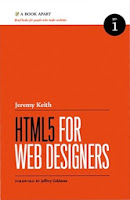When using dreamweaver I suggest just working in the code view, because if you do it in the WYSIWYG view, dreamweaver will add a bunch of unnecessary code and make it look messy.
What is nice about using dreamweaver is that you will type a tag, like <p>. And when you type </, dreamweaver will automatically fill in what closing tag need to be there. I also like that dreamweaver does color coding. This is great because you can see where you messed up because the colors will be wrong.
Dreamweaver also allows you the option of hooking up your website to dreamweaver. I like this feature because I can just hit save, and it automatically updates what you did onto your website. So you can see instantly what your changes look like.
Notepad ++
The one thing that is great about notepad ++ is that it's FREE! If you want you can download it here. I haven't explored it too much so I don't know all the features you can do, but it does have color coding. And as I mentioned before this is awesome! If you have never used color coding before, trust me as soon as you try you will never go back.
I also like that in notepad ++, it allows you to have multiple tabs open, unlike notepad. This is great when working on multiple pages, like an HTML file, a CSS file, and a JS file.
What I like about visual studio is that it gives you code hints as you are typing. If you start typing <h, it will show a drop down for h1-h6. This is nice because you can type code faster because you don't have to type the rest of the code in, Visual Studio will auto complete it.
Visual Studio also makes it easy for you not to forget to add closing tags. How it works is when you type <p>, as soon as you type >, the programs automatically adds </p> for you. I also like that on visual studio if you click on an HTML tag it will show you the where the tag is opened and where it is closed. Visual Studio is also color coded, which as I stated earlier is great.
There are many other IDE's out there. I heard of one, I wish I could remember the name, but you can select multiple lines of text at one time and write the same thing for all of them at once! That's cool! It also has some cool shortcuts you can do to your files, like get rid of all the whitespace and stuff. There is probably other awesome stuff you can do that I don't know about. Anyways, when it comes to choosing an IDE, I suggest just looking at lots of different ones and find which one works best for you. You might find that different IDE's work best in different situations. But as I said before my favorite is dreamweaver, and sometimes I will use notepad ++ or visual studio depending on the project.
